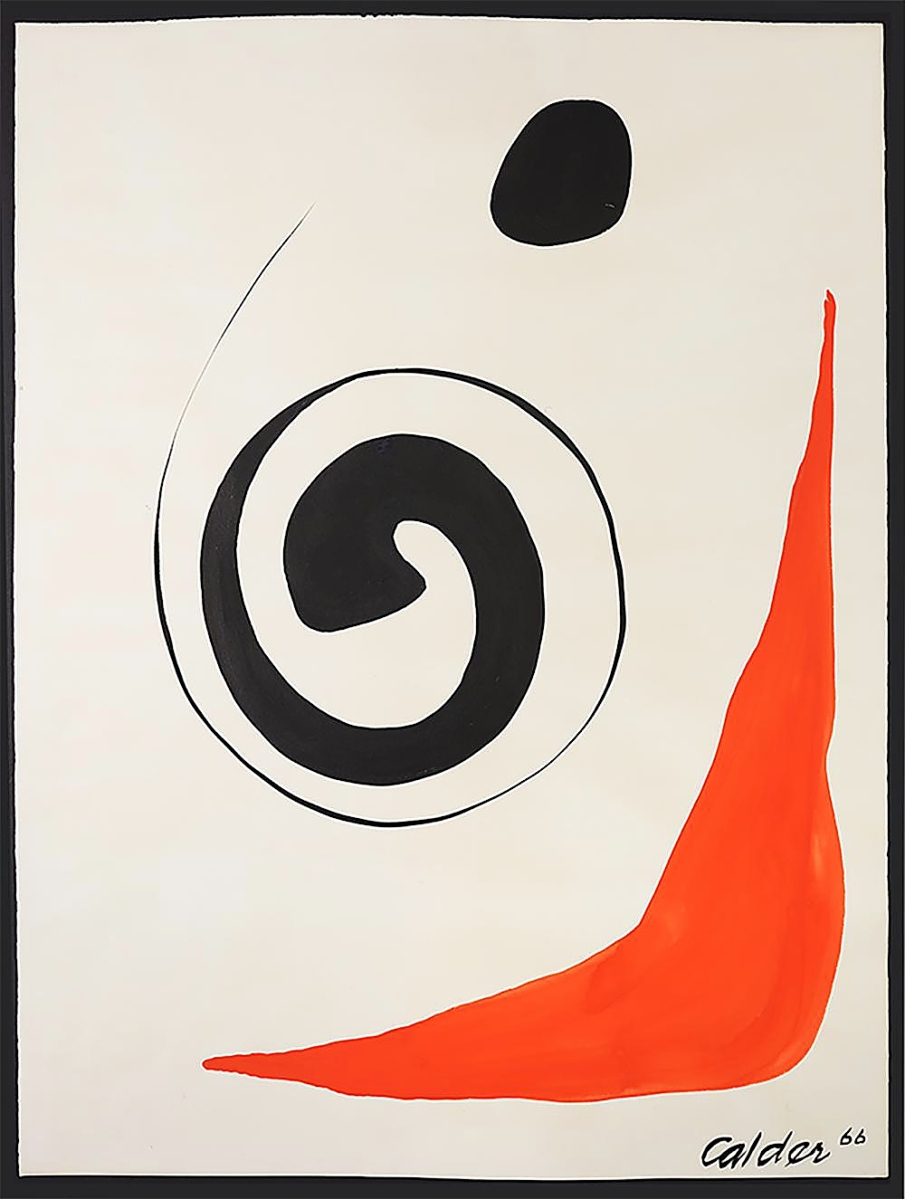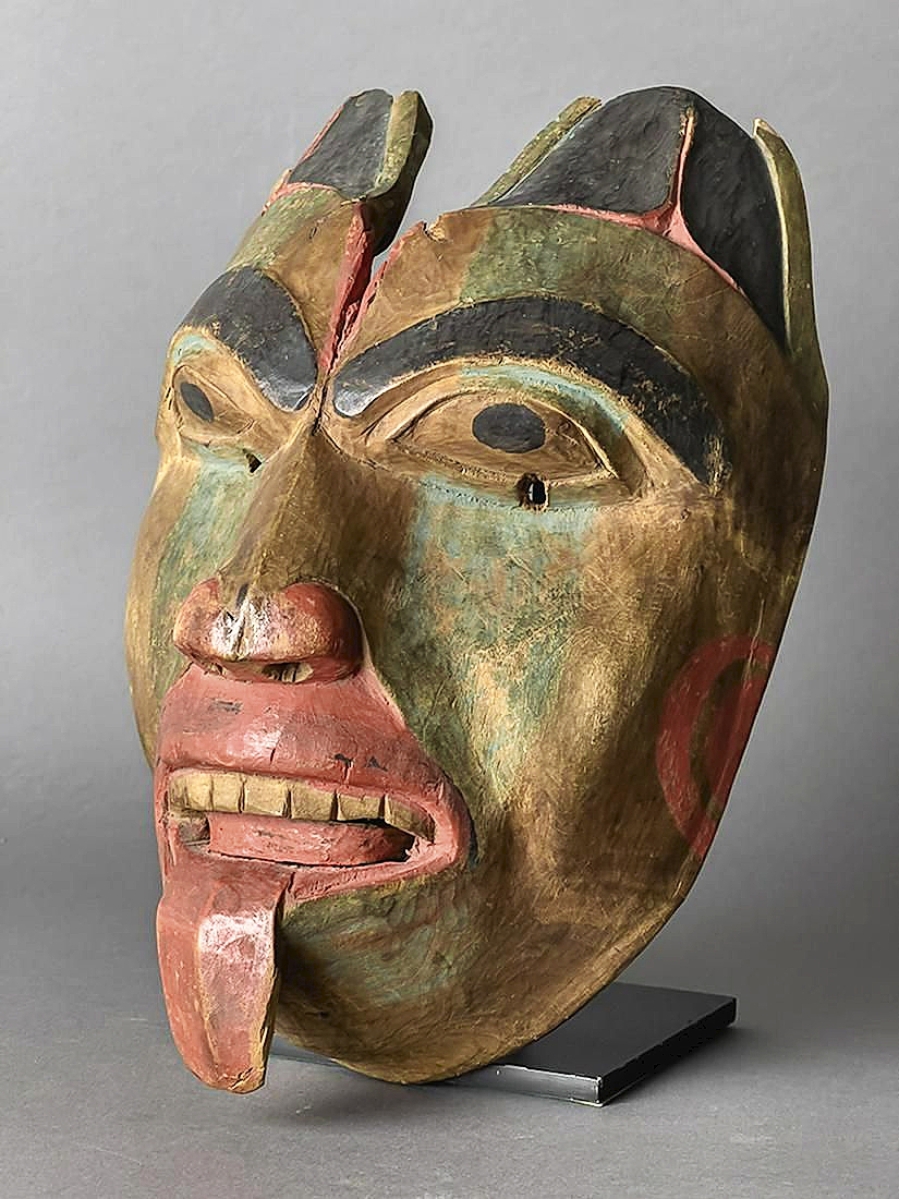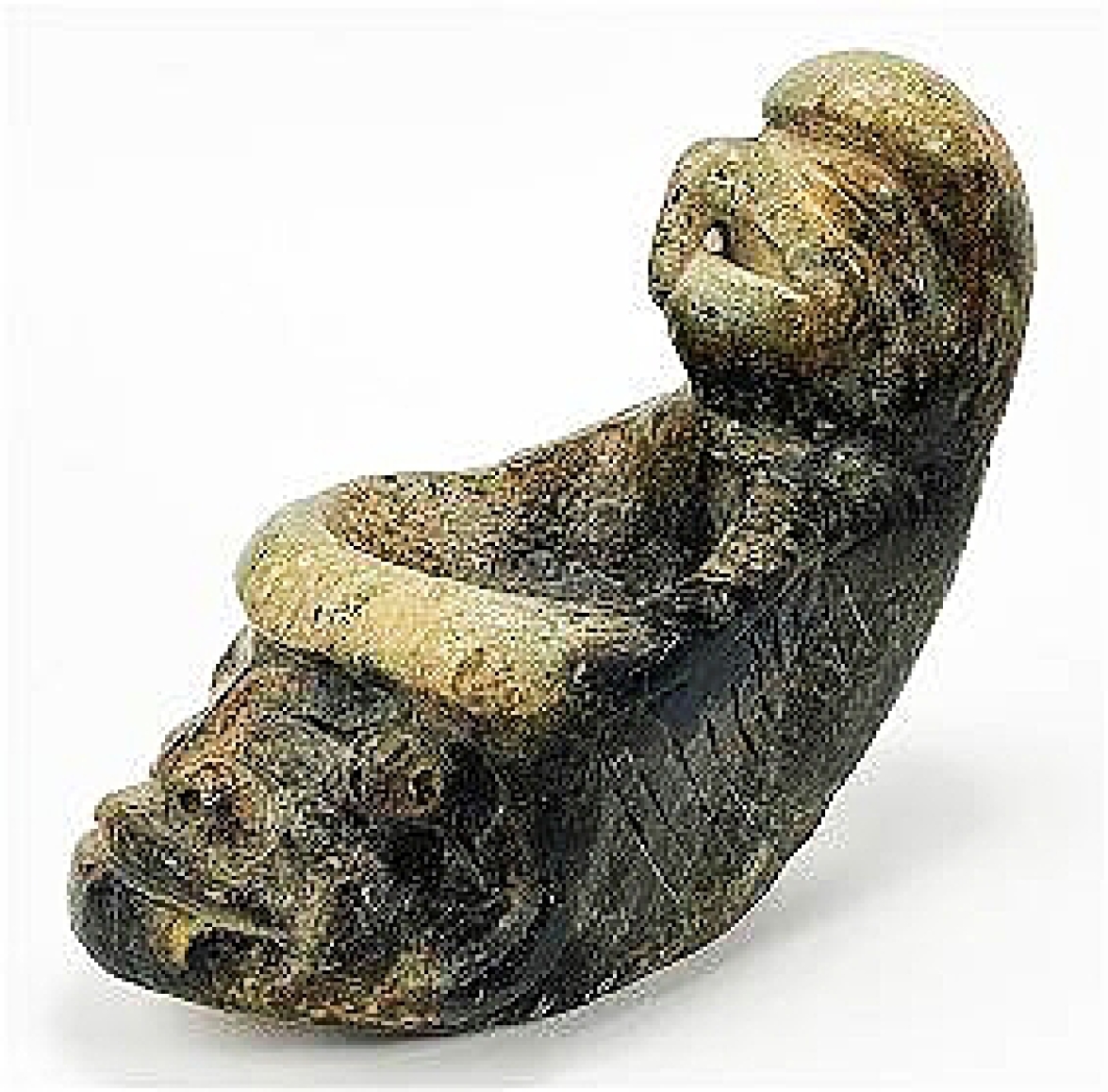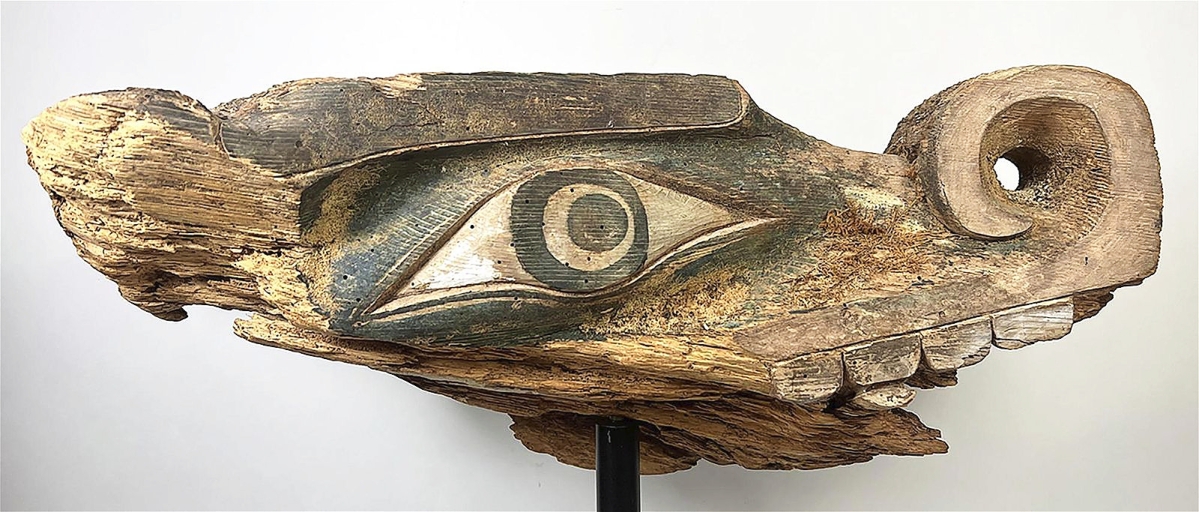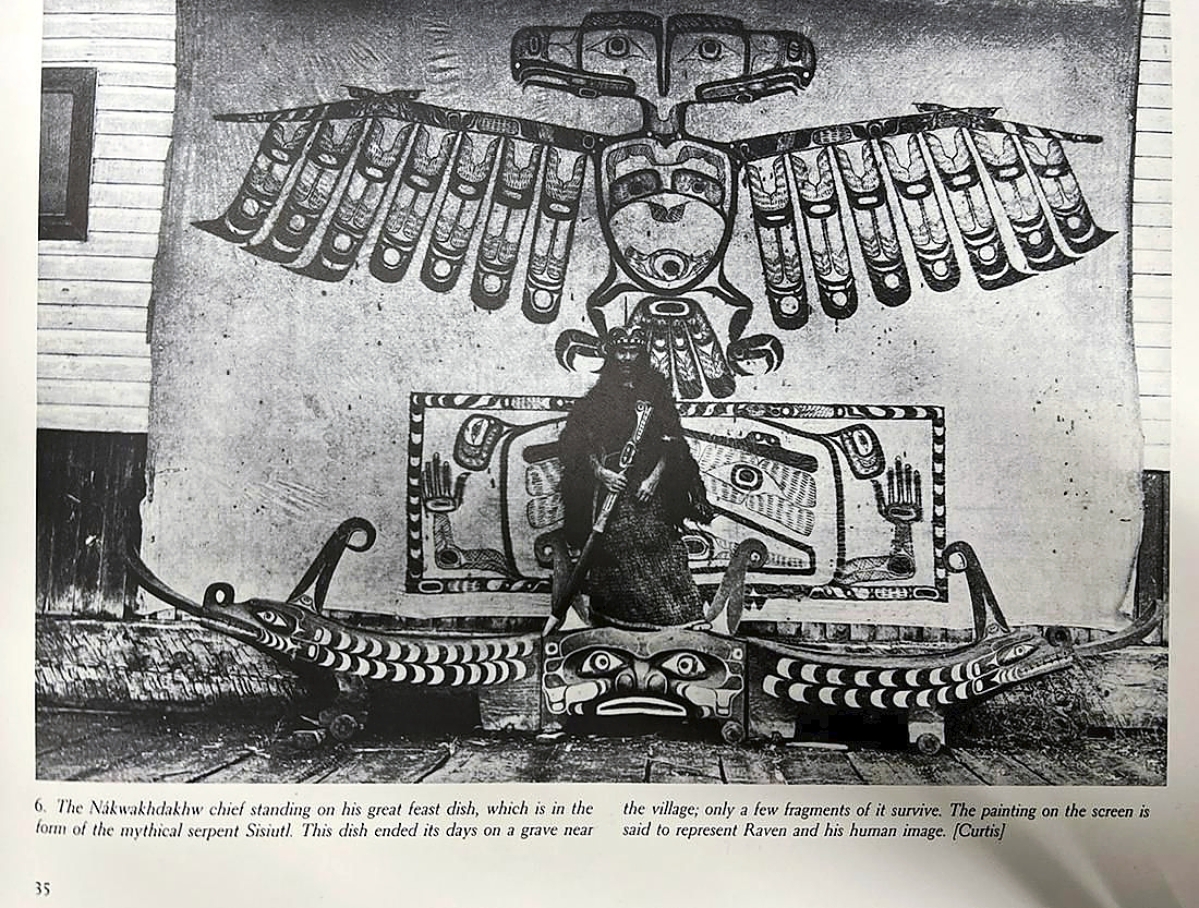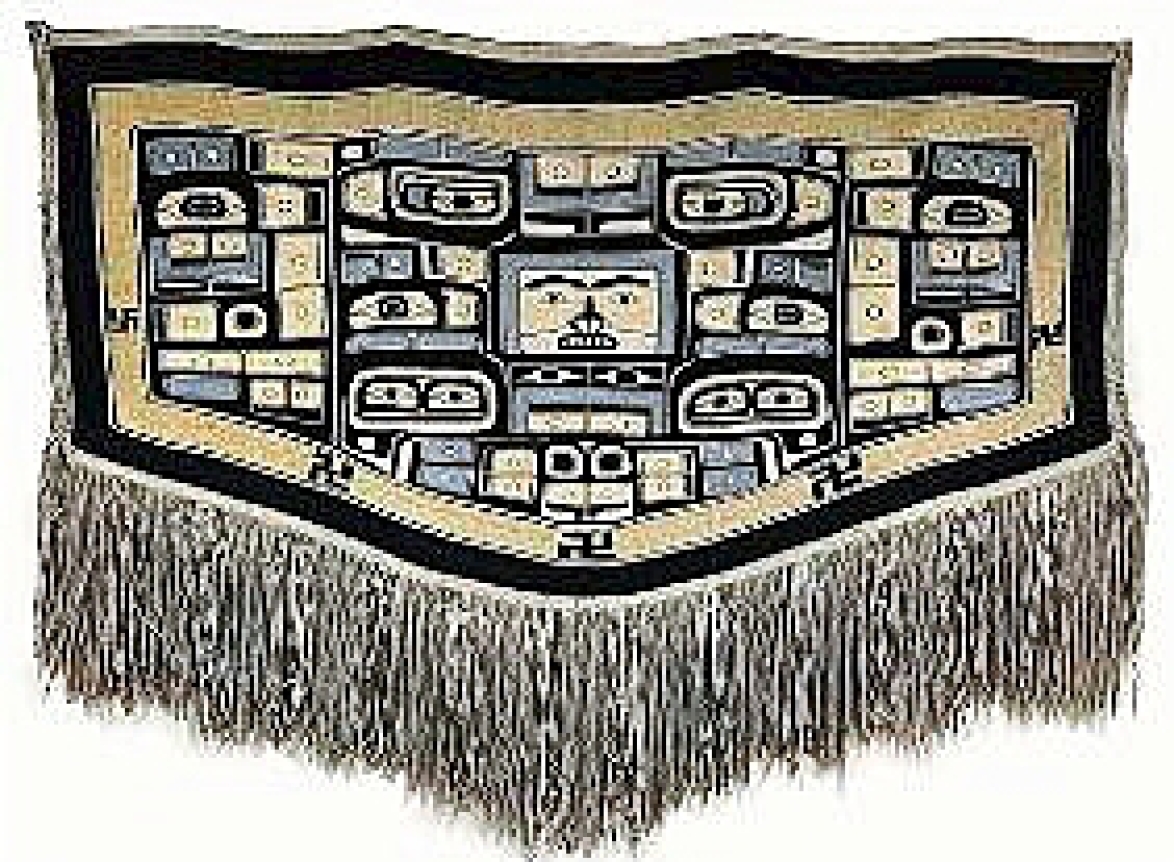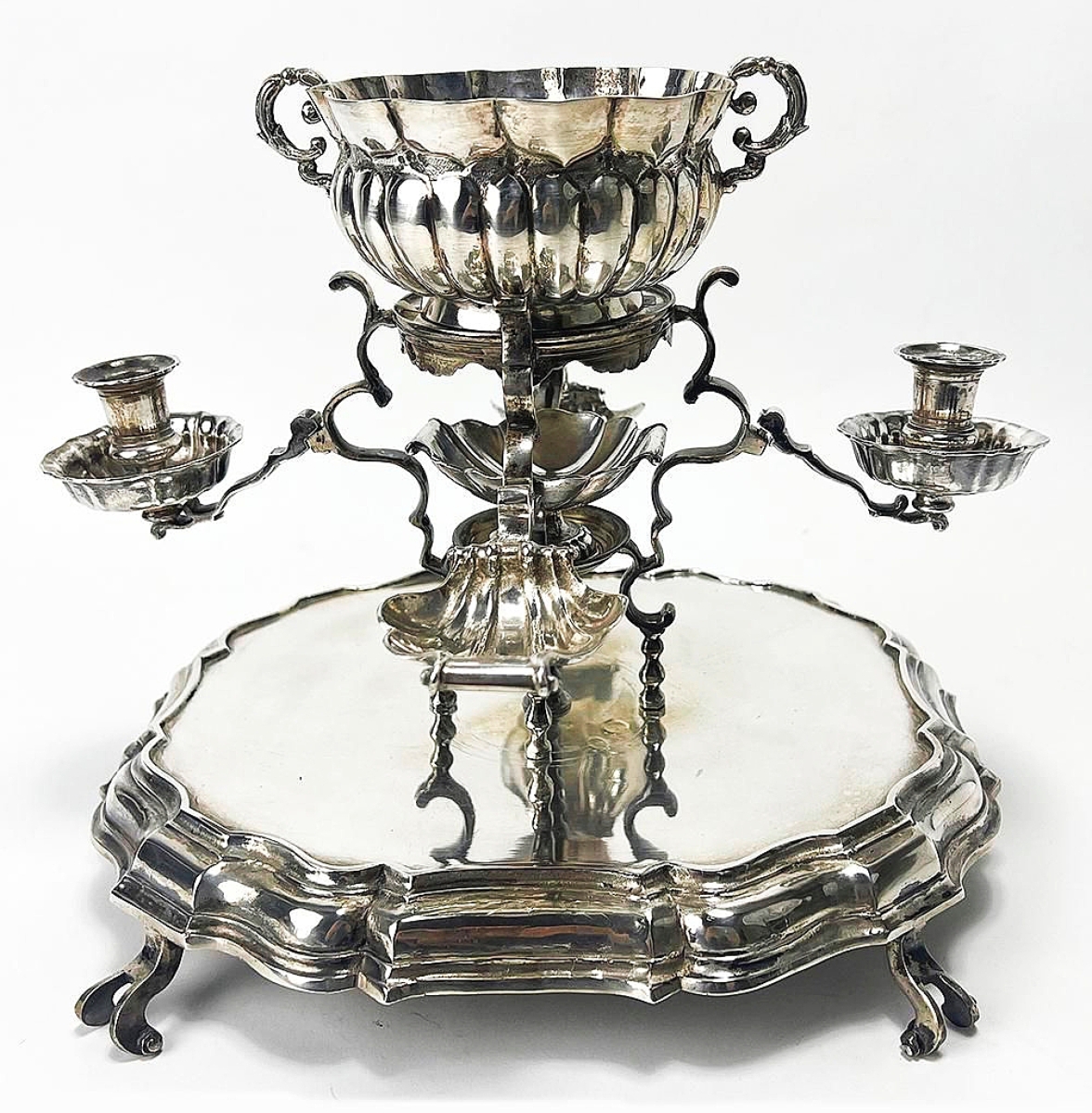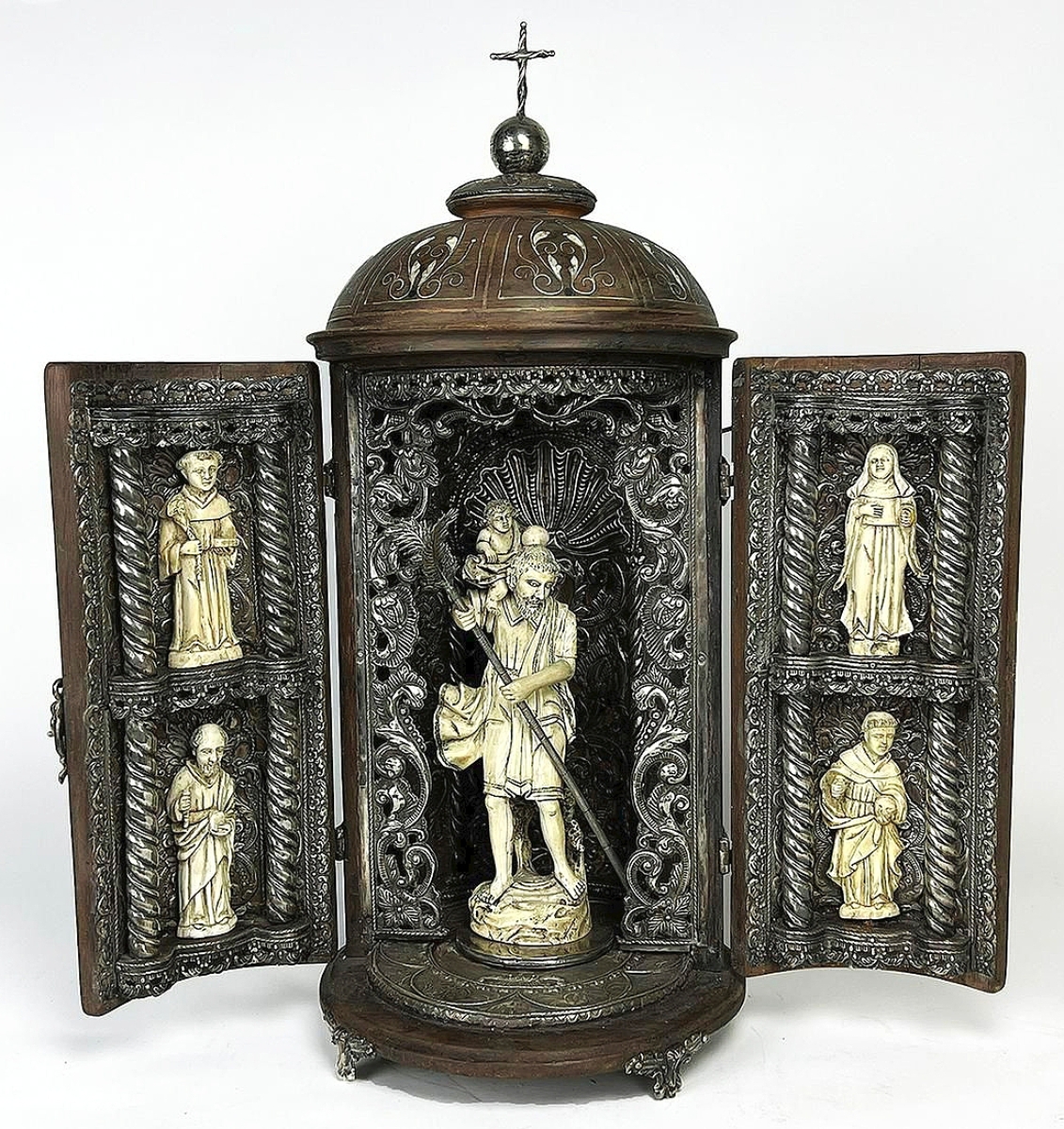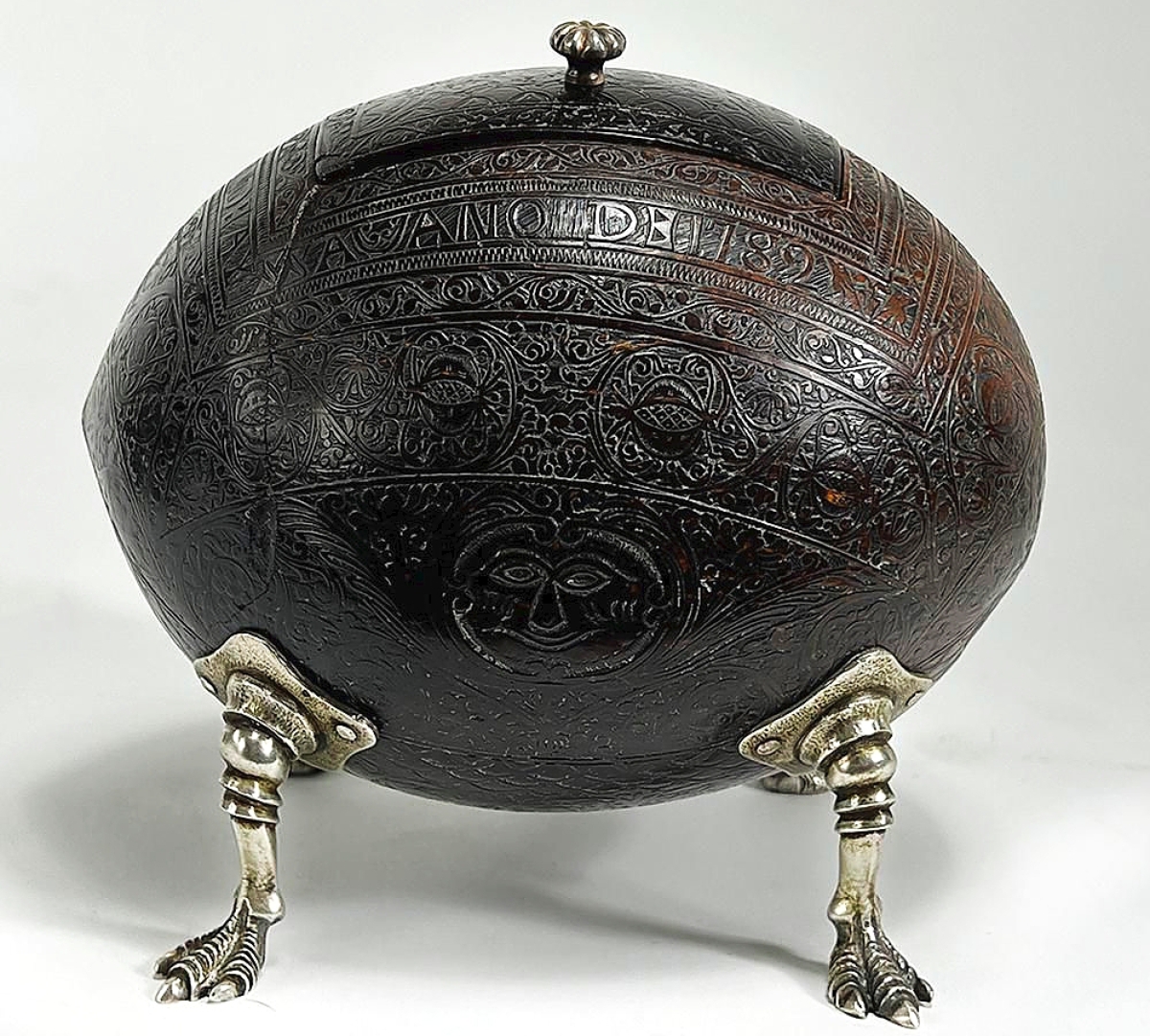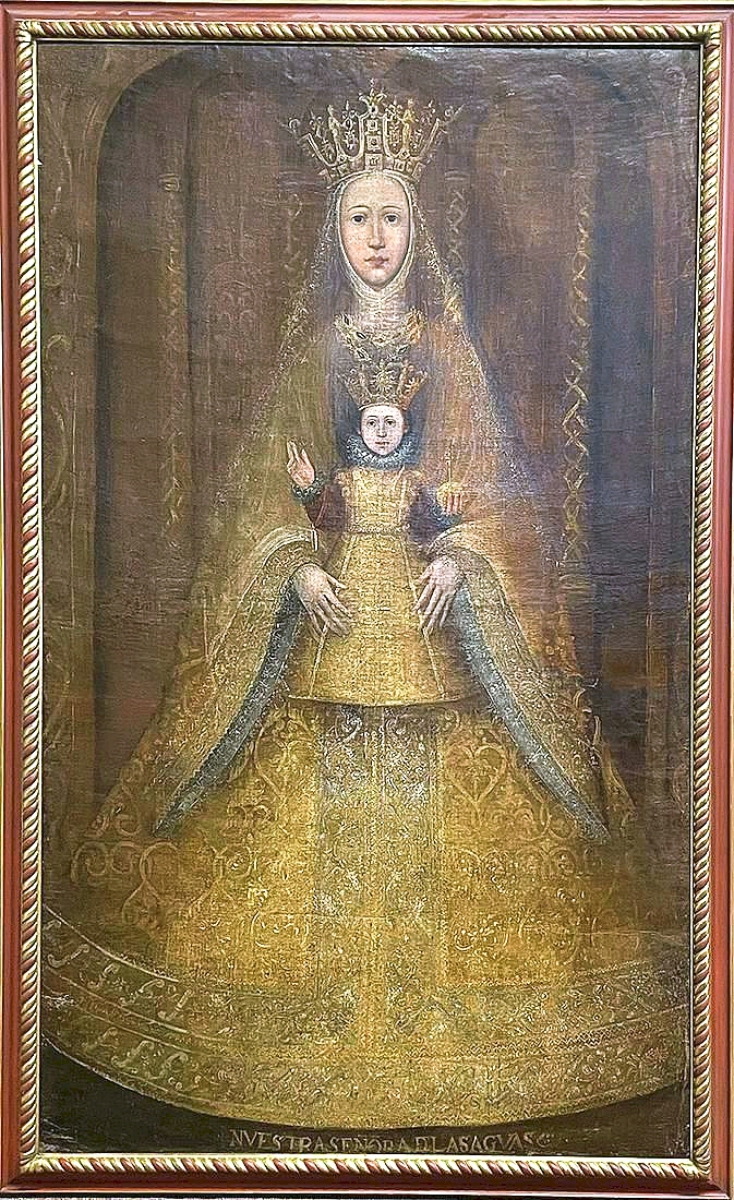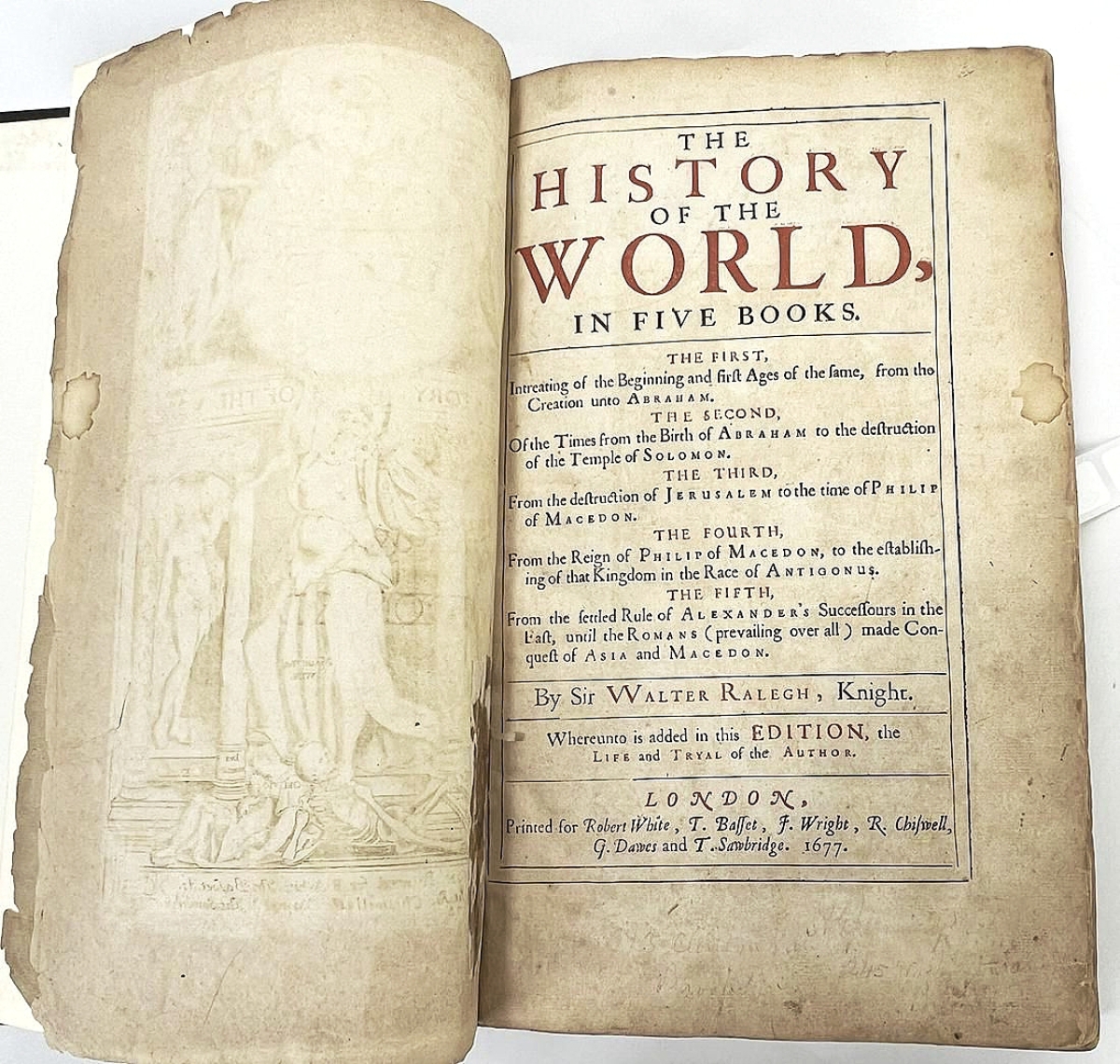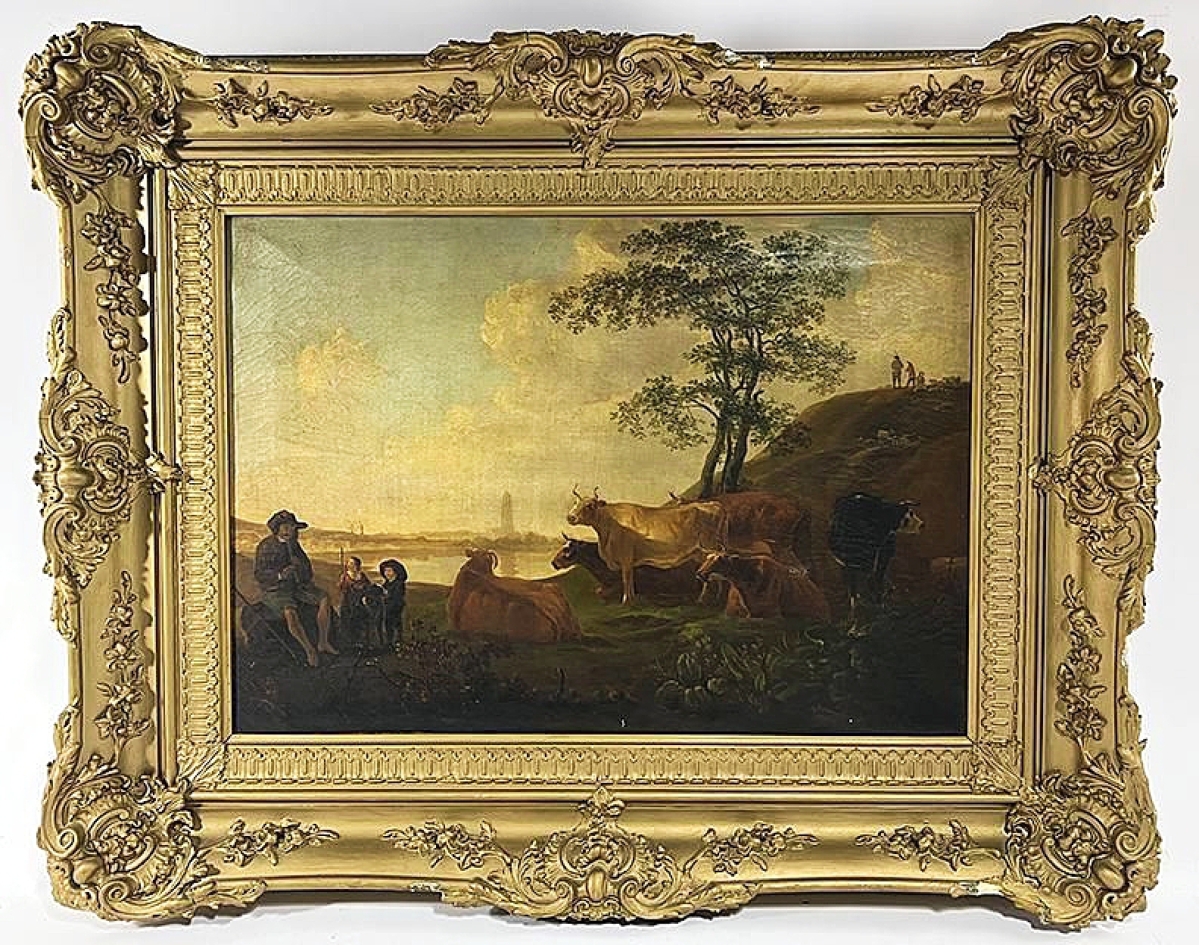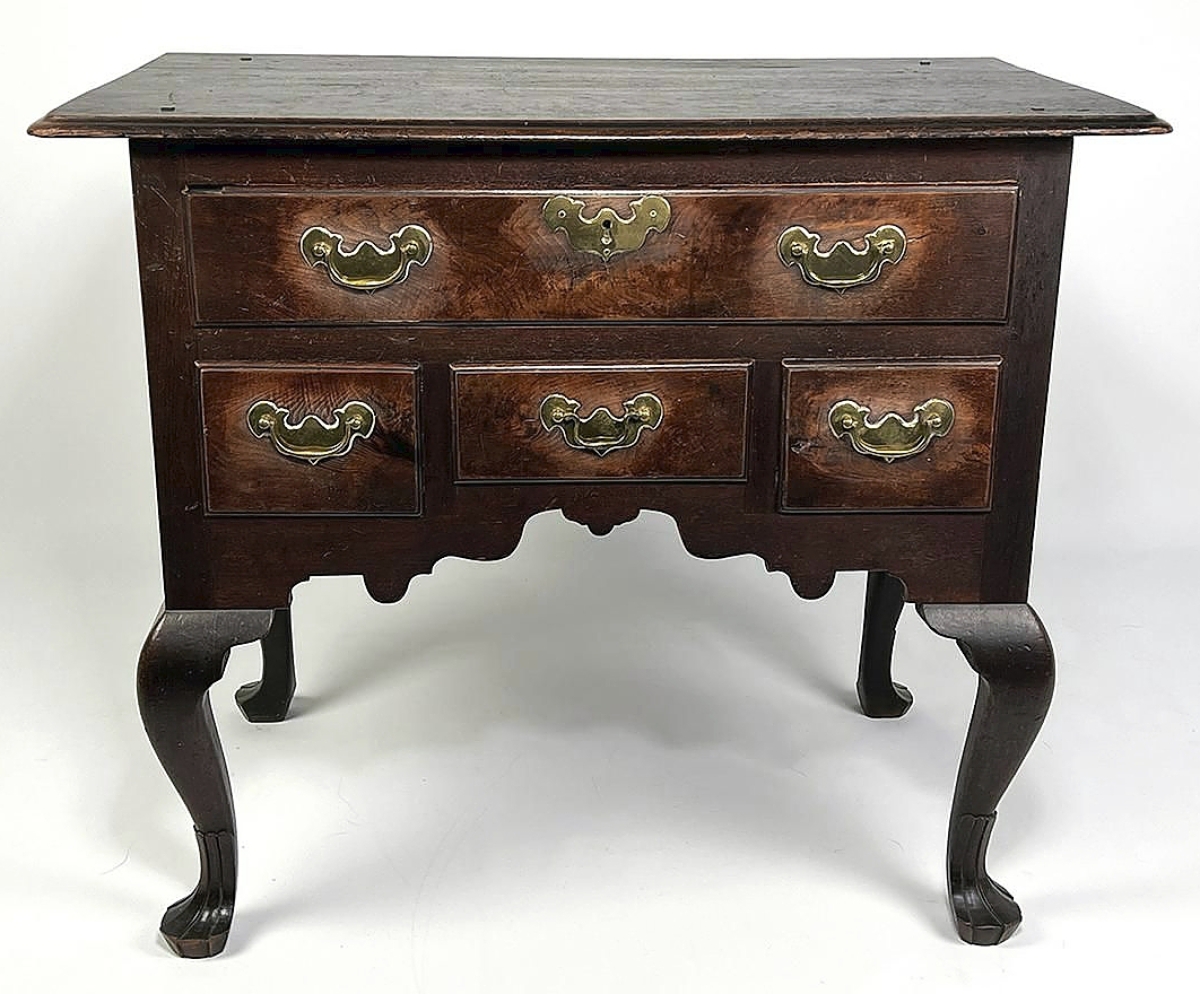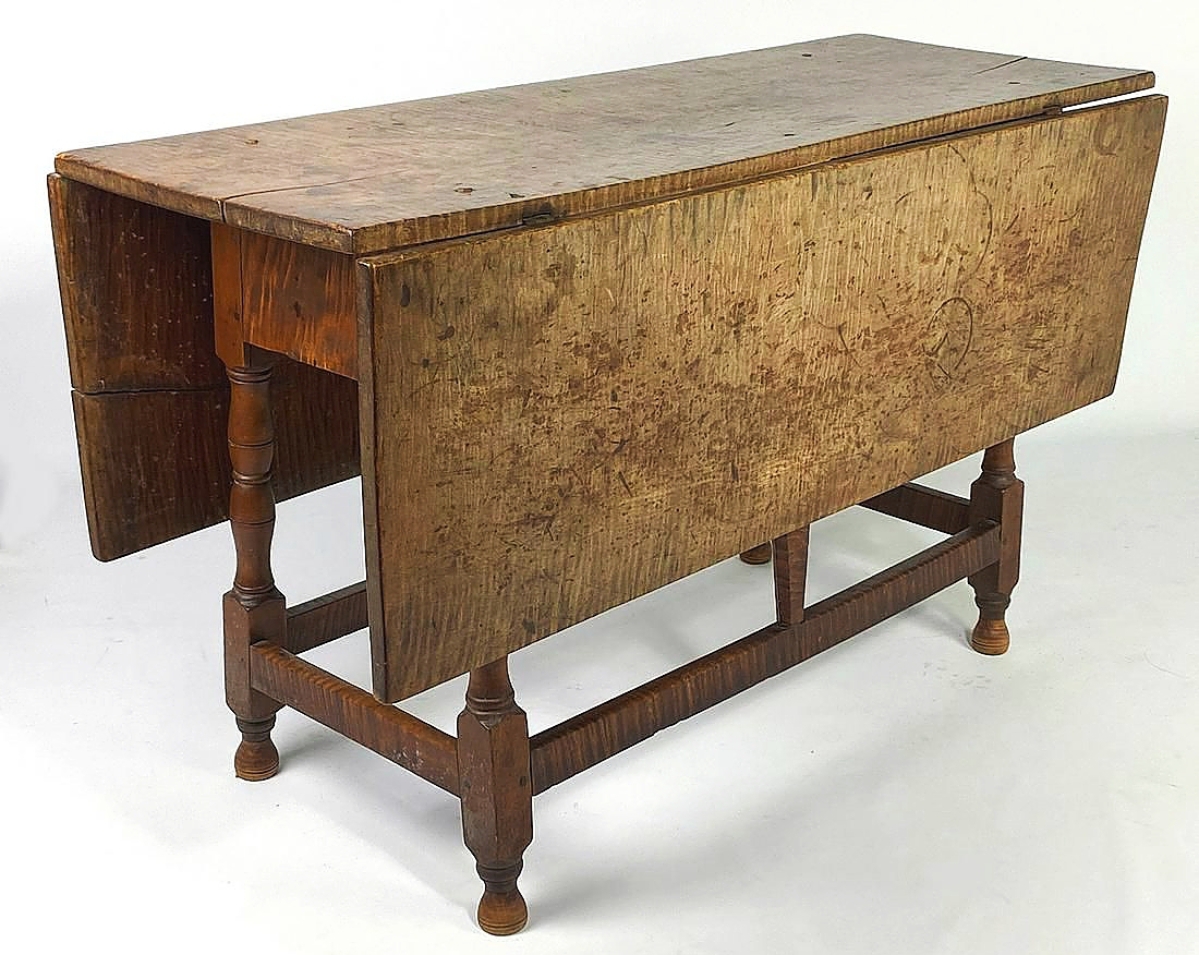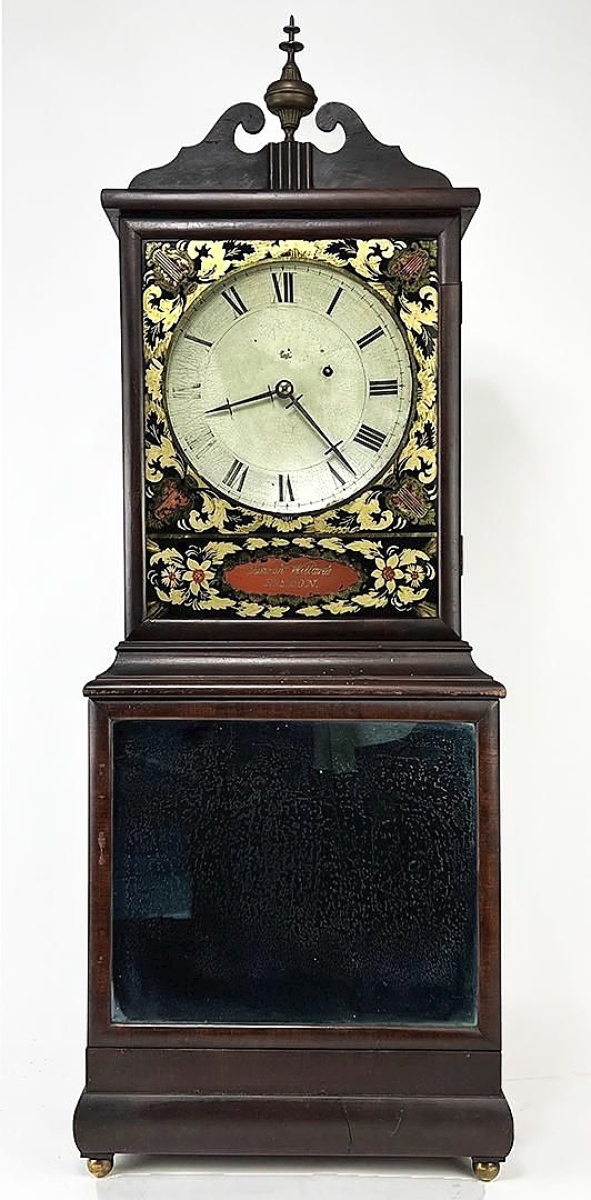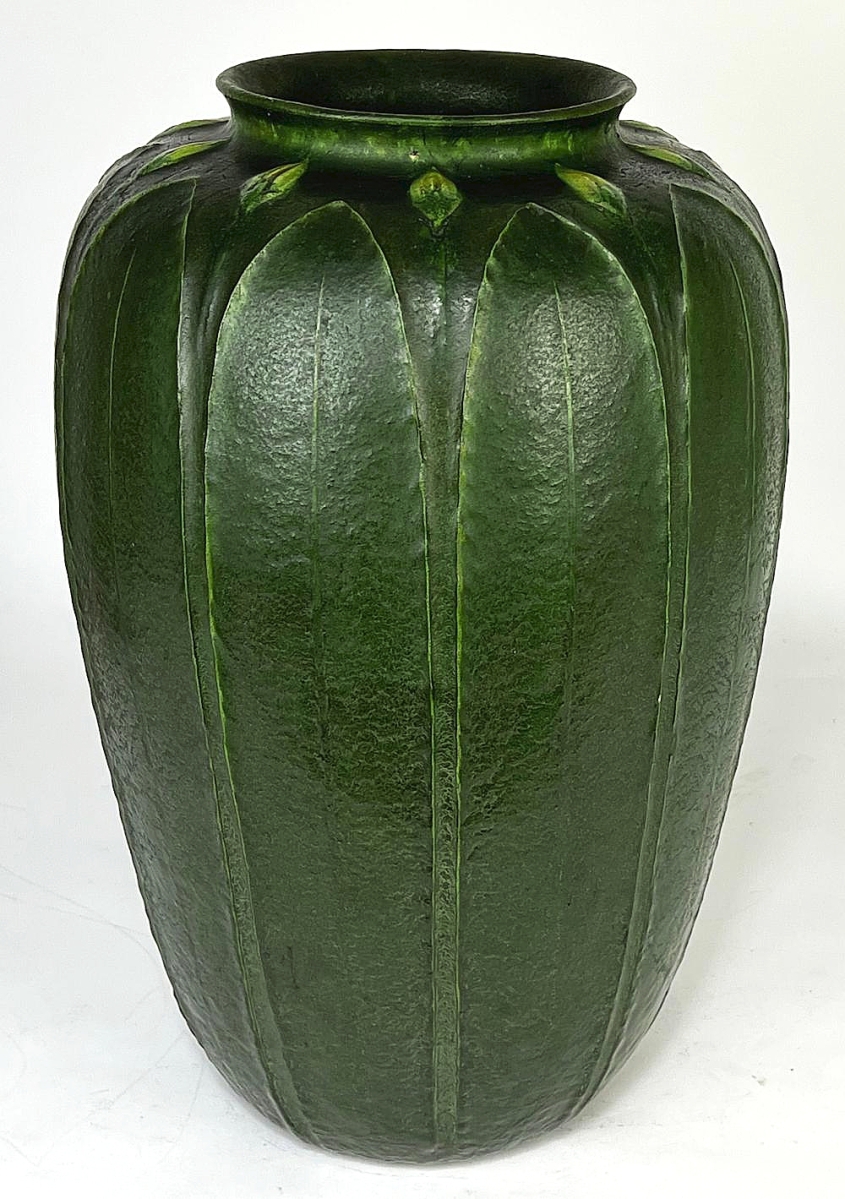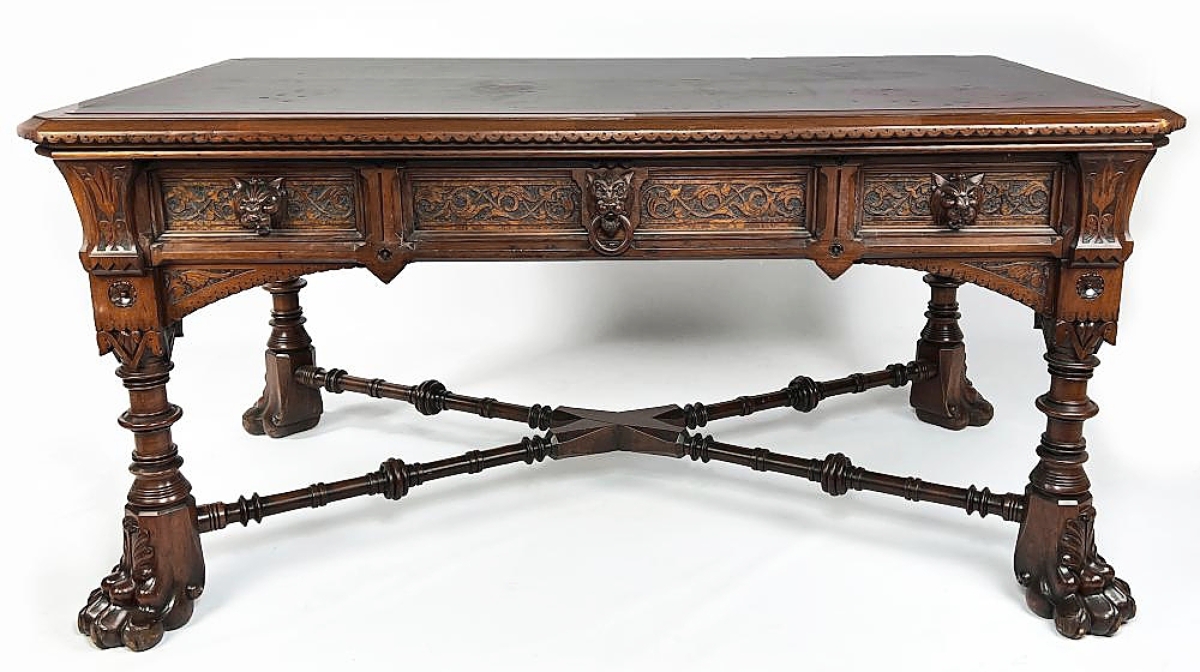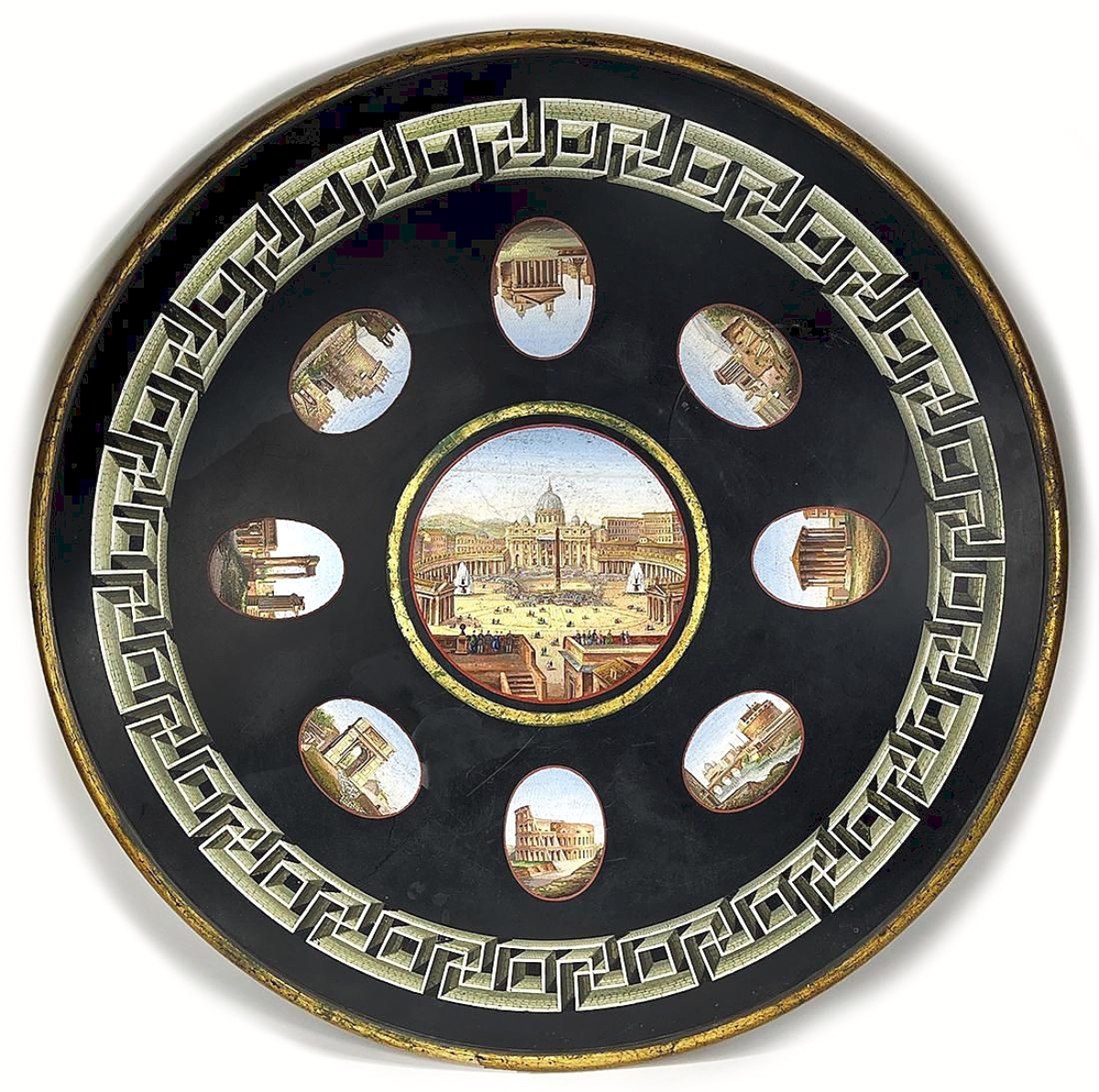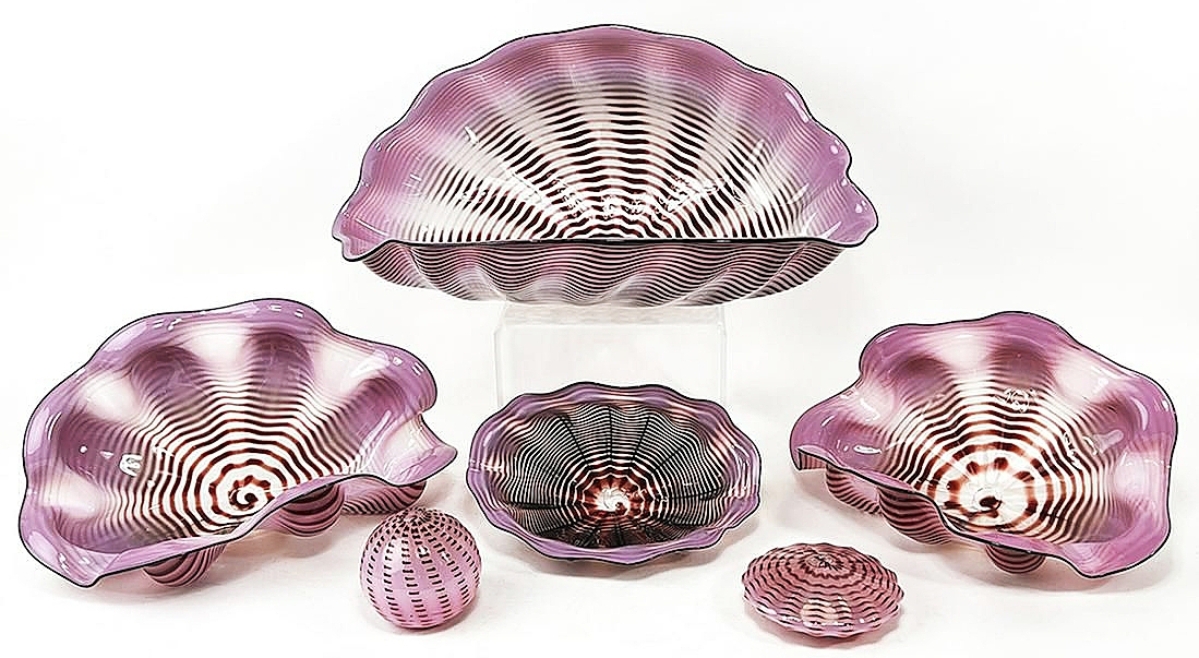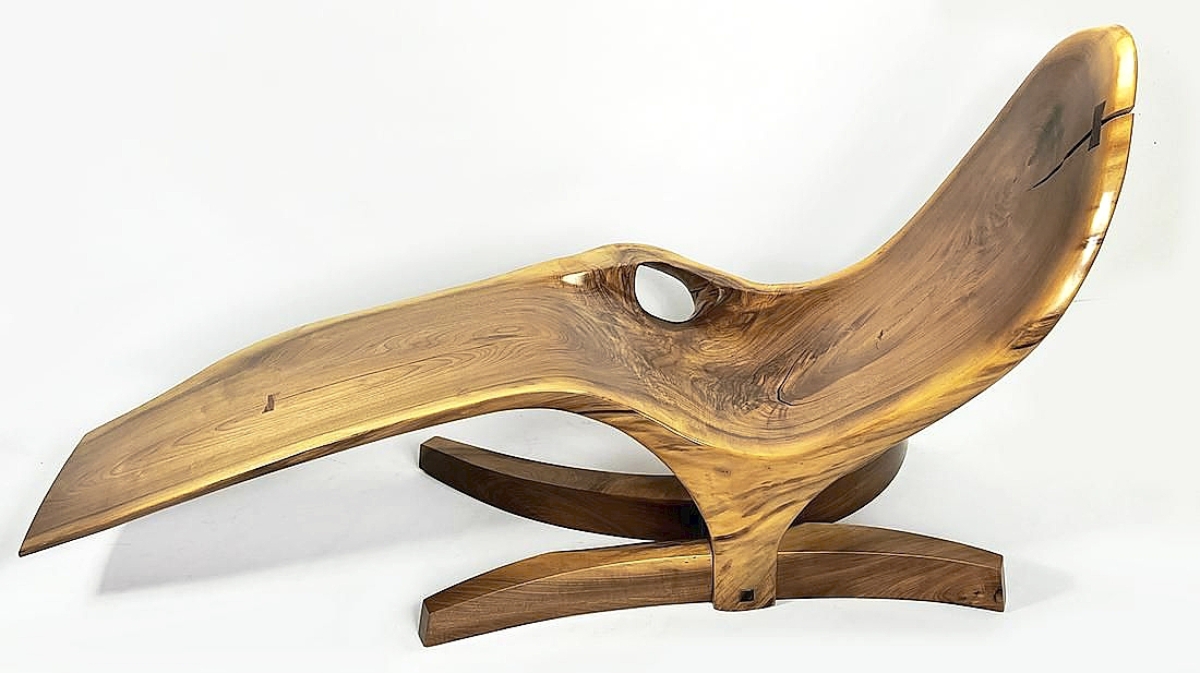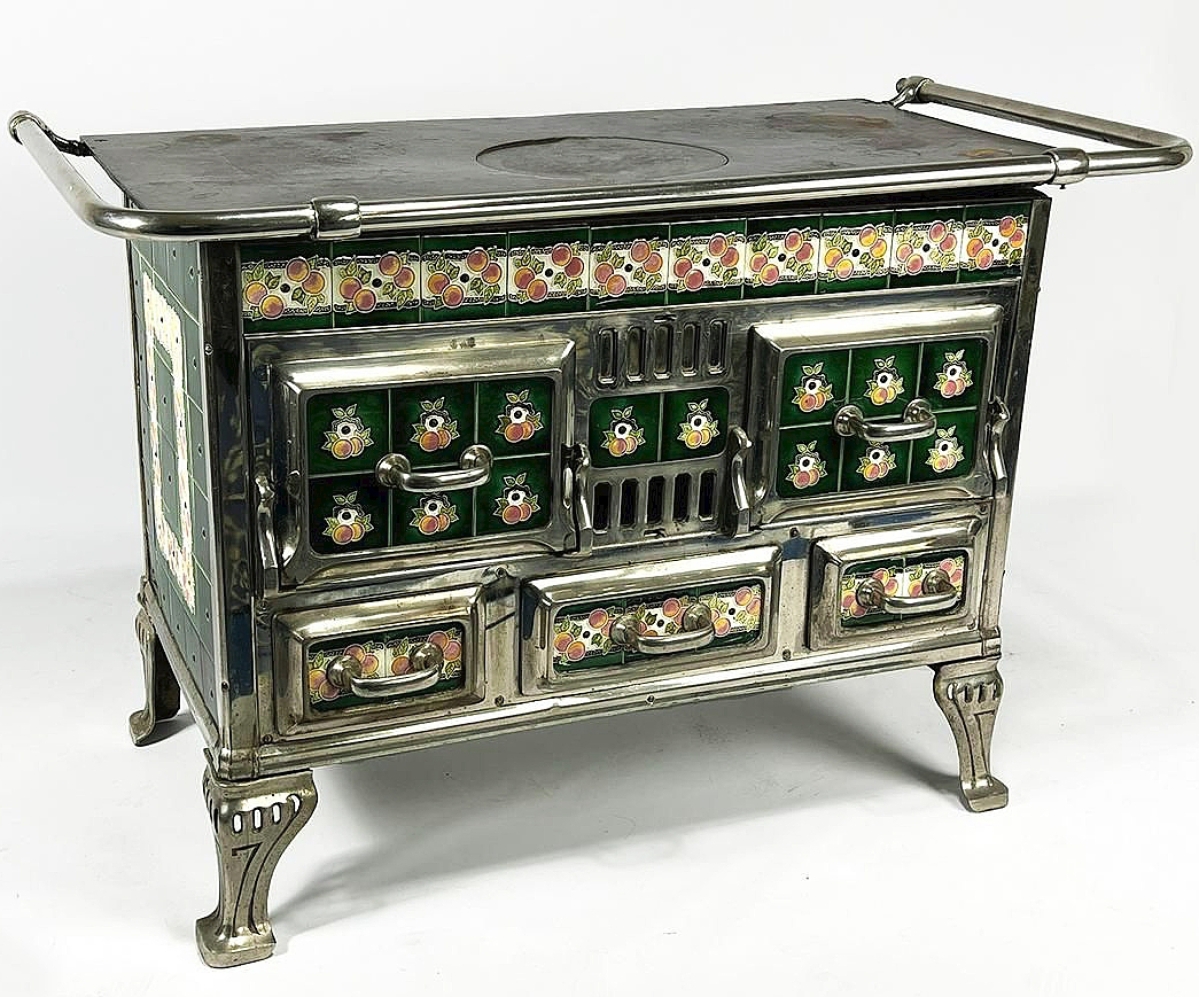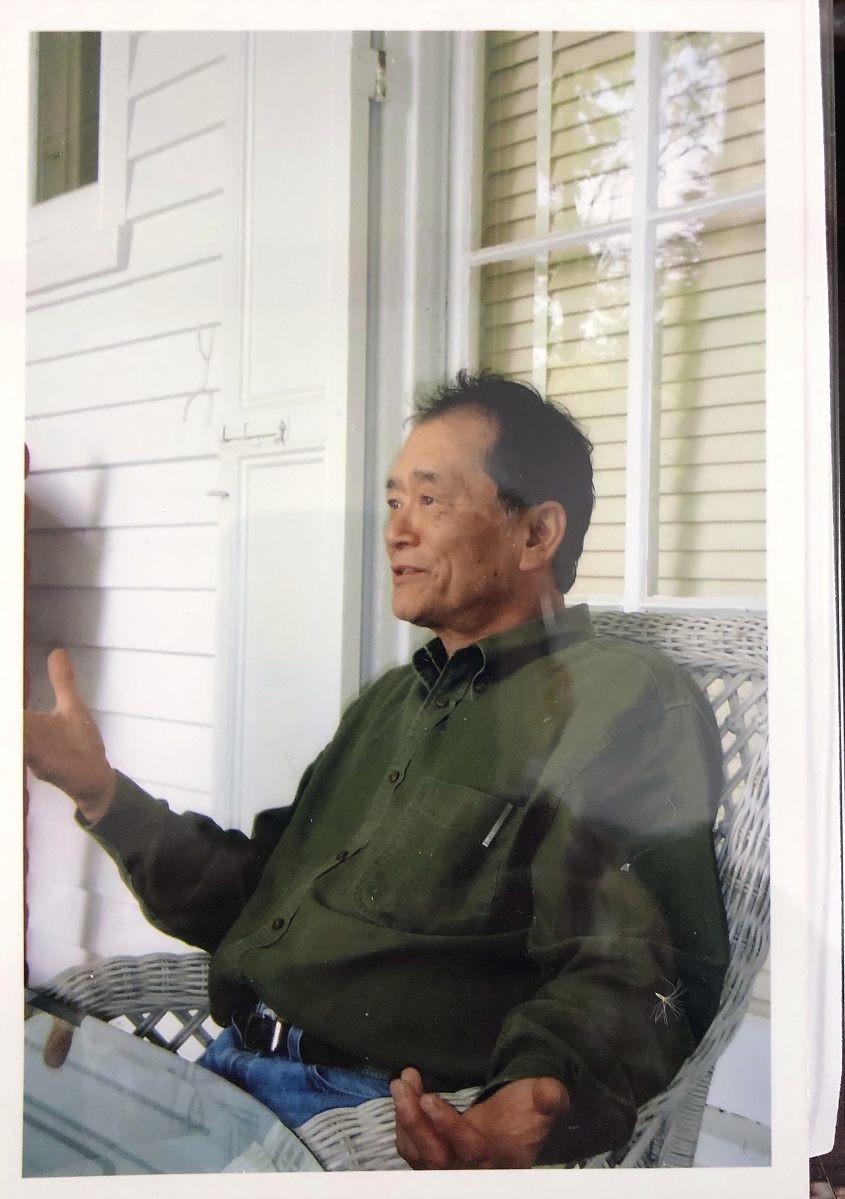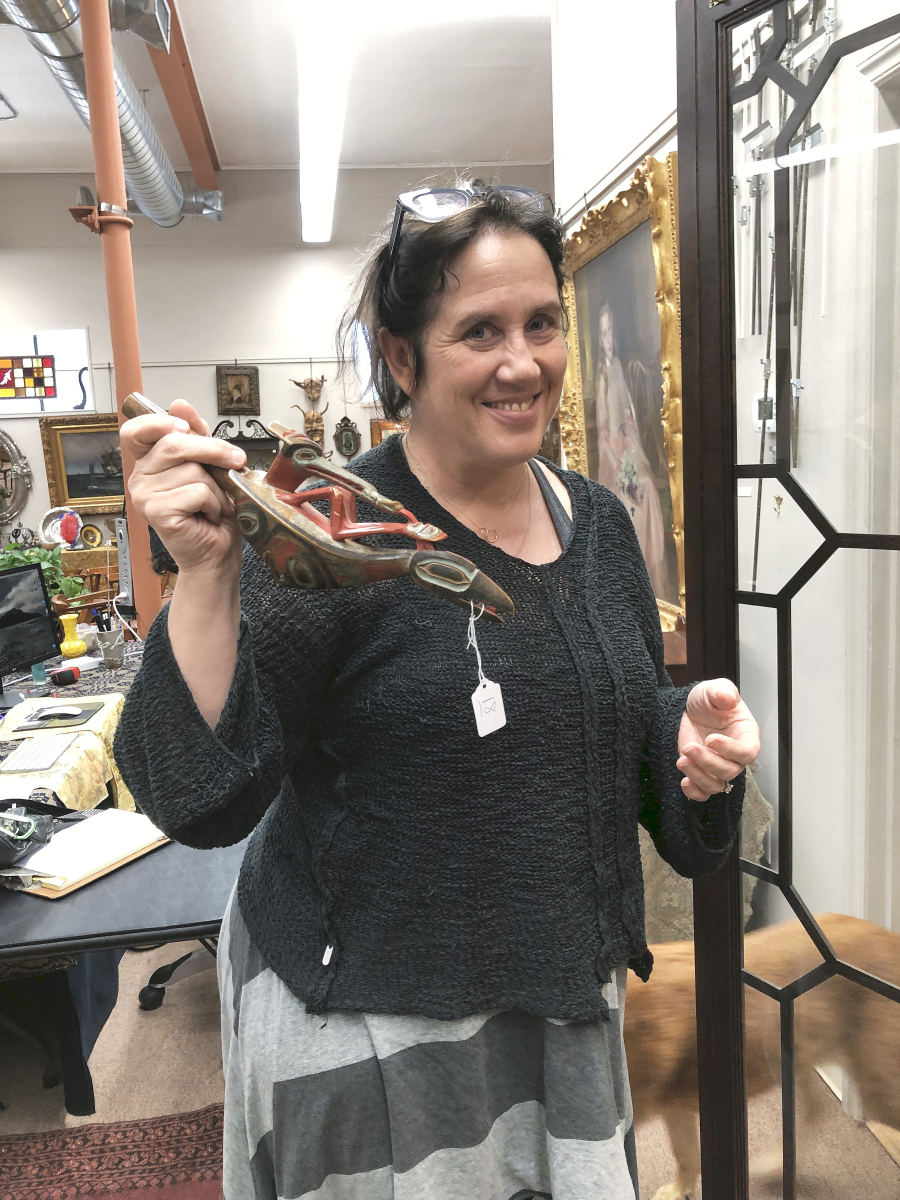“Rolling Down,” a gouache and ink drawing by Alexander Calder earned the highest price of the sale at $76,860. Signed and dated “‘66,” it was titled on the reverse. Its authenticity had been established by the Calder Foundation.
CRN’s sale included several Northwest Coast masks. Earning $17,080 was this Tlingit shaman’s mask dating to the Nineteenth Century. It combined human features with a bear’s tongue, an open mouth with teeth and bright, period colors and surface.
The oldest piece in the collection, perhaps dating to 200 BCE, this carved soapstone effigy bowl depicting an anthropomorphic bird-man was discussed in A New Look at Northwest Coast Stone Bowls by Grant Keddie, curator of archeology at the Royal British Columbia Museum in Victoria. In the catalog, Keddie is quoted as saying, “Although there are about 100 known seated human figures that have a bowl in front of them with a bird, human or other animal figure on the front of the bowl, there are only three seated bird figures with bowls known. This one is unique as it appears to represent a bird-man figure rather than a realistic bird.” It realized $6,100.
Although just a fragment, this Kwakiutl red cedar feast bowl in the form of a serpent head representing the powerful Sisiutl, sold for $6,710. It comes from one end of a huge feast bowl that was once the property of Chief Walkus of Blunden Harbor. The bowl was photographed by Edward Curtis in 1912; two other fragments are museum collections.
Edward Curtis’ photo showing the feast bowl as it was in 1912. It was later abandoned and found in poor condition in a village graveyard.
The highest priced item in the Northwest Coast collection, which sold for $31,720, was this Chilkat blanket woven from mountain goat wool and cedar bark in the “diving whale” pattern.
This auction included the final portion of a large collection of Colonial Spanish silver which CRN had been dispersing in prior auctions. This marked Eighteenth Century silver centerpiece from Guatemala, the highest priced item from the collection in this sale, reached $9,760. It was probably meant to be a prestigious display piece.
This Eighteenth Century silver, carved bone and inlaid wooden Hispano-Filipino tabernacle, 19 inches tall, represented Saint Christopher with the baby Jesus on his shoulder. Saint Christopher is the patron saint of travelers and this piece sold for $5,185.
A Spanish colonial alcancia, carved from a moro nut and mounted with silver was made in Guatemala, 1770-1800. These containers were used to store valuable items such as tobacco. With two other small coconut pieces, it sold for $3,355.
“La Virgen del Carmen holding the Christ Child,” an Eighteenth Century painting of the Cuzco school, realized $3,965.
History of the World In Five Books was written by Sir Walter Raleigh while imprisoned in the Tower of London. This edition was published in 1677 and it realized $519.
Perhaps best known for his White Mountain paintings, Benjamin Champney also painted in Europe. This landscape with people and cattle sold for $3,600. It was inscribed on back, “From the original by Cuyp in the Louvre by B. Champney, Paris 1843.”
From the G.W. Samaha collection, this circa 1740-60 Philadelphia walnut Queen Anne dressing table sold for $17,080. It had remained in the family of Cornelius Stevenson, the original owner, for several generations.
With an old surface, this New England tiger maple drop leaf table, with butterfly leaf supports, earned $6,710.
Circa 1825, this Aaron Willard, Boston shelf clock with a brass eight-day weight-driven movement brought $3,965. A card with Hatch family history was attached, indicating that it had been made for an 1825 family wedding.
It wasn’t expected to be the second highest priced item of the day, but it was. At 15 inches tall, the two-color Grueby vase had been drilled for a lamp. That did not deter bidders and it sold for $41,480.
One of the surprises of the day was this heavily carved Victorian Renaissance partners desk with three drawers on each side measured 5 feet long and had very large lion paw feet. Made by Daniel Pabst about 1870-75, it realized $39,040.
The micromosaic table top was 26 inches in diameter and did not include a base or support. The central medallion, 7 inches in diameter, was surrounded by eight oval medallions with scenes of Roman ruins. From the Grand Tour era, it finished at $19,520.
Dated 1994, this six-piece seaform group by Dale Chihuly realized $12,200. The large piece was more than 18 inches in diameter and the colors were pink, red and black.
There were three pieces of furniture made by Shinichi Miyazaki, each from single pieces of black walnut. This chaise, which brought $4,750, was accompanied by a 2005 handwritten letter from Miyazaki in which he said, “None of the material comes from a lumberyard. Each piece evolves from a huge chunk of tree.”
One of the few items selling more inexpensively than its estimate was this enameled, nickel-plated cast iron cook stove with several ceramic tiles decorated with painted peaches. Stoves like this, known as low-country stoves, were made in Belgium around 1900. It fetched $610.
A carved full-bodied monkey in costume, with arms outstretched which once held a tray, was 52 inches tall and was Carl Nordblom’s favorite item in the sale. It brought $4,575.
Shinichi Miyazaki, the Japanese artist who created the three pieces of black walnut furniture. He was born in Tokyo in 1939; the Smithsonian owns one of his chairs.
Laura Phillips did much of the cataloging for this sale. She’s shown here holding the Tlingit or Haida two-piece rattle depicting a raven, which sold for $10,980.

